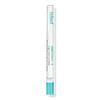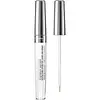What's inside
What's inside
 Key Ingredients
Key Ingredients

 Benefits
Benefits

 Concerns
Concerns

 Ingredients Side-by-side
Ingredients Side-by-side

Water
Skin ConditioningGlycerin
HumectantCaprylyl Glycol
EmollientMalus Domestica Fruit Cell Culture Extract
Skin ConditioningMyristoyl Pentapeptide-17
Skin ConditioningBiotinoyl Tripeptide-1
N-Prolyl Palmitoyl Tripeptide-56 Acetate
Skin Conditioning1,2-Hexanediol
Skin ConditioningPolysorbate 20
EmulsifyingLactitol
HumectantXylitol
HumectantTroxerutin
Skin ConditioningPentylene Glycol
Skin ConditioningPanthenol
Skin ConditioningDisodium EDTA
Phenoxyethanol
PreservativeXanthan Gum
EmulsifyingSodium Hydroxide
BufferingLecithin
EmollientSodium Benzoate
MaskingBenzoic Acid
MaskingCitric Acid
BufferingWater, Glycerin, Caprylyl Glycol, Malus Domestica Fruit Cell Culture Extract, Myristoyl Pentapeptide-17, Biotinoyl Tripeptide-1, N-Prolyl Palmitoyl Tripeptide-56 Acetate, 1,2-Hexanediol, Polysorbate 20, Lactitol, Xylitol, Troxerutin, Pentylene Glycol, Panthenol, Disodium EDTA, Phenoxyethanol, Xanthan Gum, Sodium Hydroxide, Lecithin, Sodium Benzoate, Benzoic Acid, Citric Acid
Water
Skin ConditioningPentylene Glycol
Skin ConditioningPvp
Emulsion StabilisingButylene Glycol
HumectantGlycerin
HumectantHydroxyethylcellulose
Emulsion StabilisingPhenoxyethanol
PreservativePanthenol
Skin ConditioningMethylparaben
PreservativeDisodium EDTA
PPG-26-Buteth-26
Skin ConditioningPEG-40 Hydrogenated Castor Oil
EmulsifyingArginine
MaskingCaffeine
Skin ConditioningPantolactone
Humectant1,2-Hexanediol
Skin ConditioningCaprylyl Glycol
EmollientLithium Magnesium Sodium Silicate
AbsorbentSodium Benzoate
MaskingApigenin
AntioxidantBenzoic Acid
MaskingMyristoyl Pentapeptide-17
Skin ConditioningBiotin
AntiseborrhoeicHydrolyzed Keratin
HumectantSodium Hyaluronate
HumectantOleanolic Acid
Skin ConditioningBiotinoyl Tripeptide-1
Sodium Sulfate
Potassium Sorbate
PreservativeBambusa Arundinacea Stem Extract
Skin ConditioningSilica
AbrasiveWater, Pentylene Glycol, Pvp, Butylene Glycol, Glycerin, Hydroxyethylcellulose, Phenoxyethanol, Panthenol, Methylparaben, Disodium EDTA, PPG-26-Buteth-26, PEG-40 Hydrogenated Castor Oil, Arginine, Caffeine, Pantolactone, 1,2-Hexanediol, Caprylyl Glycol, Lithium Magnesium Sodium Silicate, Sodium Benzoate, Apigenin, Benzoic Acid, Myristoyl Pentapeptide-17, Biotin, Hydrolyzed Keratin, Sodium Hyaluronate, Oleanolic Acid, Biotinoyl Tripeptide-1, Sodium Sulfate, Potassium Sorbate, Bambusa Arundinacea Stem Extract, Silica
Ingredients Explained
These ingredients are found in both products.
Ingredients higher up in an ingredient list are typically present in a larger amount.
1,2-Hexanediol is a synthetic liquid and another multi-functional powerhouse.
It is a:
- Humectant, drawing moisture into the skin
- Emollient, helping to soften skin
- Solvent, dispersing and stabilizing formulas
- Preservative booster, enhancing the antimicrobial activity of other preservatives
Benzoic Acid is used to preserve and adjust the pH of products.
The antimicrobial property of Benzoic Acid helps elongate a product's shelf life. Its main role is to reduce fungi growth and is not found to be effective at fighting bacteria. Therefore Benzoic Acid is always added along with other preservatives.
In its pure form, Benzoic Acid looks like a white crystalline solid. It has slight solubility in water.
The name of Benzoic Acid comes from gum benzoin, which used to be the sole source of deriving this ingredient. Benzoic Acid is the most simple aromatic carboxylic acid.
Benzoic Acid is naturally occuring in strawberries, mustard, cinnamon, and cloves. It has a slight scent but is not considered to be a fragrance.
Learn more about Benzoic AcidBiotinoyl Tripeptide-1 is a lab-made molecule that combines two parts: biotin (vitamin B7) and Tripeptide-1. Together, they form a peptide that’s often used in hair and eyelash products.
In-vitro studies show this ingredient helps hair bulb cells grow faster and product more structual proteins. This helps keep hair securely anchored in the follicle.
A small human study using a mascara with 2% Biotinoyl Tripeptide-1 reported lashes that were about 17% longer and 19% thicker after one month.
One study from 2025 compared topical spray vs. a combined tropical/oral treatment. The combination group saw greater increases in total hair count.
While these early results are encouraging, most of the data comes from in-vitro experiments (in test tubes) or small, short-term trials.
Biotinoyl Tripeptide-1 looks promising for supporting hair strength and growth but there’s not yet strong clinical evidence to confirm how well it works.
Learn more about Biotinoyl Tripeptide-1Caprylyl Glycol is a humectant and emollient, meaning it attracts and preserves moisture.
It is a common ingredient in many products, especially those designed to hydrate skin. The primary benefits are retaining moisture, skin softening, and promoting a healthy skin barrier.
Though Caprylyl Glycol is an alcohol derived from fatty acids, it is not the kind that can dry out skin.
This ingredient is also used as a preservative to extend the life of products. It has slight antimicrobial properties.
Learn more about Caprylyl GlycolDisodium EDTA plays a role in making products more stable by aiding other preservatives.
It is a chelating agent, meaning it neutralizes metal ions that may be found in a product.
Disodium EDTA is a salt of edetic acid and is found to be safe in cosmetic ingredients.
Learn more about Disodium EDTAGlycerin is already naturally found in your skin. It helps moisturize and protect your skin.
A study from 2016 found glycerin to be more effective as a humectant than AHAs and hyaluronic acid.
As a humectant, it helps the skin stay hydrated by pulling moisture to your skin. The low molecular weight of glycerin allows it to pull moisture into the deeper layers of your skin.
Hydrated skin improves your skin barrier; Your skin barrier helps protect against irritants and bacteria.
Glycerin has also been found to have antimicrobial and antiviral properties. Due to these properties, glycerin is often used in wound and burn treatments.
In cosmetics, glycerin is usually derived from plants such as soybean or palm. However, it can also be sourced from animals, such as tallow or animal fat.
This ingredient is organic, colorless, odorless, and non-toxic.
Glycerin is the name for this ingredient in American English. British English uses Glycerol/Glycerine.
Learn more about GlycerinMyristoyl Pentapeptide-17 isn't fungal acne safe and is a peptide.
Panthenol is a common ingredient that helps hydrate and soothe the skin. It is found naturally in our skin and hair.
There are two forms of panthenol: D and L.
D-panthenol is also known as dexpanthenol. Most cosmetics use dexpanthenol or a mixture of D and L-panthenol.
Panthenol is famous due to its ability to go deeper into the skin's layers. Using this ingredient has numerous pros (and no cons):
Like hyaluronic acid, panthenol is a humectant. Humectants are able to bind and hold large amounts of water to keep skin hydrated.
This ingredient works well for wound healing. It works by increasing tissue in the wound and helps close open wounds.
Once oxidized, panthenol converts to pantothenic acid. Panthothenic acid is found in all living cells.
This ingredient is also referred to as pro-vitamin B5.
Learn more about PanthenolPentylene glycol is typically used within a product to thicken it. It also adds a smooth, soft, and moisturizing feel to the product. It is naturally found in plants such as sugar beets.
The hydrophilic trait of Pentylene Glycol makes it a humectant. As a humectant, Pentylene Glycol helps draw moisture from the air to your skin. This can help keep your skin hydrated.
This property also makes Pentylene Glycol a great texture enhancer. It can also help thicken or stabilize a product.
Pentylene Glycol also acts as a mild preservative and helps to keep a product microbe-free.
Some people may experience mild eye and skin irritation from Pentylene Glycol. We always recommend speaking with a professional about using this ingredient in your routine.
Pentylene Glycol has a low molecular weight and is part of the 1,2-glycol family.
Learn more about Pentylene GlycolPhenoxyethanol is a preservative that has germicide, antimicrobial, and aromatic properties. Studies show that phenoxyethanol can prevent microbial growth. By itself, it has a scent that is similar to that of a rose.
It's often used in formulations along with Caprylyl Glycol to preserve the shelf life of products.
Sodium Benzoate is a preservative. It's used in both cosmetic and food products to inhibit the growth of mold and bacteria. It is typically produced synthetically.
Both the US FDA and EU Health Committee have approved the use of sodium benzoate. In the US, levels of 0.1% (of the total product) are allowed.
Sodium benzoate works as a preservative by inhibiting the growth of bacteria inside of cells. It prevents the cell from fermenting a type of sugar using an enzyme called phosphofructokinase.
It is the salt of benzoic acid. Foods containing sodium benzoate include soda, salad dressings, condiments, fruit juices, wines, and snack foods.
Studies for using ascorbic acid and sodium benzoate in cosmetics are lacking, especially in skincare routines with multiple steps.
We always recommend speaking with a professional, such as a dermatologist, if you have any concerns.
Learn more about Sodium BenzoateWater. It's the most common cosmetic ingredient of all. You'll usually see it at the top of ingredient lists, meaning that it makes up the largest part of the product.
So why is it so popular? Water most often acts as a solvent - this means that it helps dissolve other ingredients into the formulation.
You'll also recognize water as that liquid we all need to stay alive. If you see this, drink a glass of water. Stay hydrated!
Learn more about Water